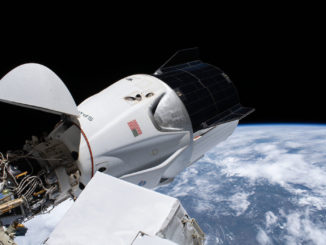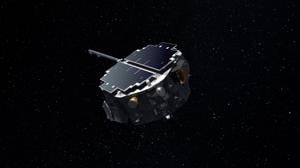Science
SpaceX Successfully Launches X-37B Spaceplane for USSF Mission

A SpaceX Falcon 9 rocket launched from NASA’s Kennedy Space Center in Florida just before midnight on August 21, 2025, carrying the X-37B spaceplane for the United States Space Force (USSF). This mission, designated USSF-36, marks the eighth operational flight for the X-37B program, which has been active since its inception in April 2010.
The Falcon 9 lifted off from Launch Complex 39A and successfully separated the X-37B approximately 11 minutes later. Following this, the Falcon 9 first-stage booster completed its sixth flight, landing at Cape Canaveral Space Force Station’s Landing Zone 2, producing a notable sonic boom during touchdown.
Highlights of the X-37B Mission
The X-37B, developed by Boeing, is recognized as the USSF’s leading platform for testing advanced space technologies. In a prelaunch statement, William Blauser, Acting Director of the Air Force Rapid Capabilities Office, emphasized the spacecraft’s role in redefining possibilities in space exploration. The ongoing missions aim to innovate the testing of critical technologies essential for future military operations.
Among the significant experiments being conducted during this flight are demonstrations of laser communication and quantum navigation. The high-bandwidth laser communication technology will facilitate interaction with commercial satellite networks in Low Earth Orbit. Although specifics regarding the satellites involved remain undisclosed, the USSF hinted at potential collaborations with various entities, including SpaceX’s Starlink network.
Gen. Chance Saltzman, Chief of Space Operations, highlighted the importance of this demonstration, stating that it represents a pivotal advancement in the USSF’s capability to enhance satellite communications architecture. By using shorter wavelength infrared light for data transmission, the X-37B aims to improve both security and data transfer rates compared to traditional radio frequency methods.
Quantum Navigation and Future Implications
Another groundbreaking feature of this mission is the integration of a quantum inertial sensor. This technology allows for navigation without reliance on GPS, which is particularly crucial in scenarios where GPS signals are compromised or unavailable. Col. Ramsey Horn, Commander of Space Delta 9, noted that the quantum inertial sensing capability will provide robust navigation solutions both in Earth orbit and in cislunar space.
While the exact duration of the X-37B’s operations in low Earth orbit during this mission is not publicly disclosed, the advancements being tested hold significant implications for future space operations. The ongoing development of technologies like quantum navigation could enhance the resilience and adaptability of U.S. military capabilities in space.
As the mission progresses, the USSF and SpaceX continue to push the boundaries of what is possible in space exploration, fostering innovation that could shape the future of satellite communications and navigation technologies.
-

 Technology5 months ago
Technology5 months agoDiscover the Top 10 Calorie Counting Apps of 2025
-

 Health2 months ago
Health2 months agoBella Hadid Shares Health Update After Treatment for Lyme Disease
-

 Health3 months ago
Health3 months agoErin Bates Shares Recovery Update Following Sepsis Complications
-

 Technology4 months ago
Technology4 months agoDiscover How to Reverse Image Search Using ChatGPT Effortlessly
-

 Technology1 month ago
Technology1 month agoDiscover 2025’s Top GPUs for Exceptional 4K Gaming Performance
-

 Technology2 months ago
Technology2 months agoElectric Moto Influencer Surronster Arrested in Tijuana
-

 Technology5 months ago
Technology5 months agoMeta Initiates $60B AI Data Center Expansion, Starting in Ohio
-

 Technology5 months ago
Technology5 months agoRecovering a Suspended TikTok Account: A Step-by-Step Guide
-

 Health4 months ago
Health4 months agoTested: Rab Firewall Mountain Jacket Survives Harsh Conditions
-

 Lifestyle5 months ago
Lifestyle5 months agoBelton Family Reunites After Daughter Survives Hill Country Floods
-

 Technology4 months ago
Technology4 months agoHarmonic Launches AI Chatbot App to Transform Mathematical Reasoning
-

 Technology3 months ago
Technology3 months agoUncovering the Top Five Most Challenging Motorcycles to Ride





















